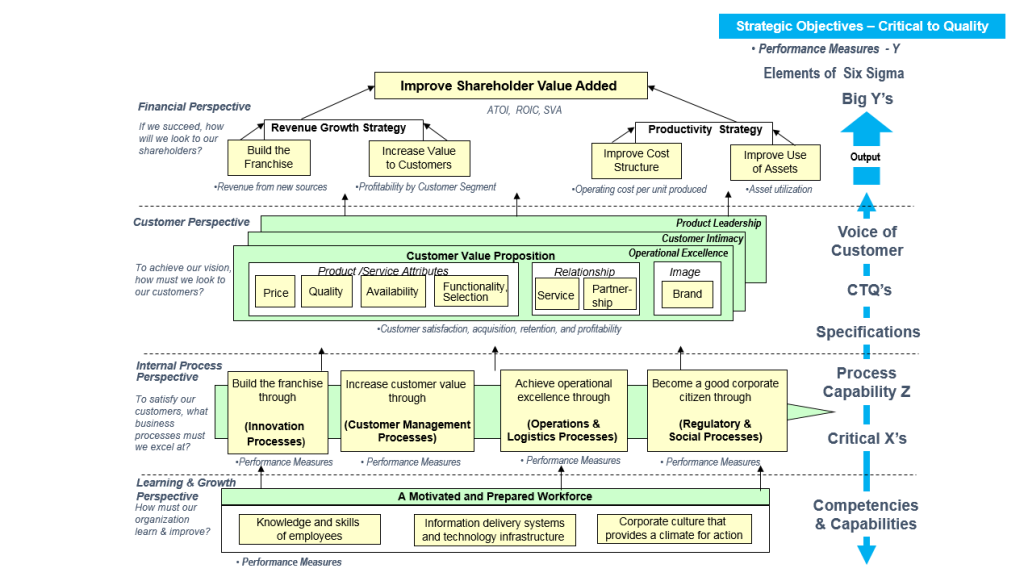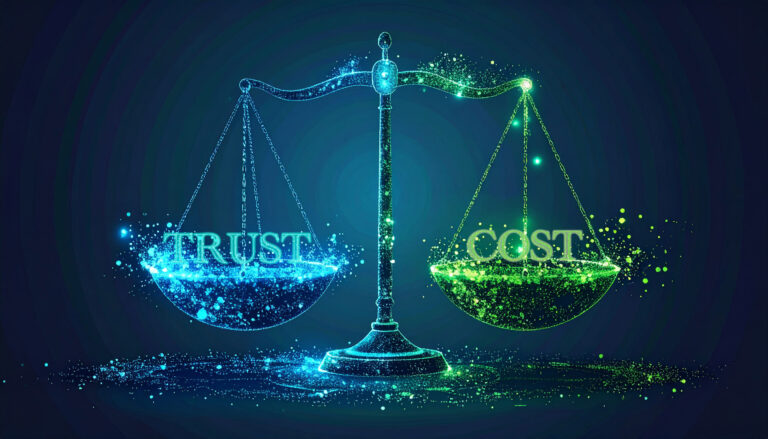What is the Strategy Map Flow-down?
The strategy map flow-down is a framework to execute strategy, which begins with a disciplined and consistent way to describe it. Measures are the key. This is what the organization “hears,” and the feedback tests the logic of the strategy and guides adjustments. This is done in plain view of and with the ongoing collaboration of the organization.
The logic of the strategy map shows Critical to Quality (CTQ)/Critical to Customer (CTC). The flow-down tells the story. Elements of Six Sigma are arrayed on this map.

The strategy map flow-down is a way to describe and communicate how a particular business unit or market segment is going to create value. It is a detailed and comprehensive template or checklist to frame your strategy, and describes what you are going to do in a logical framework. A complete description requires written strategic objectives so everyone in the business unit or market segment knows what they are going to do. The logic of the framework answers the question “Why?” as you go down and the question “How?” as you go up.
Layers of the Map
A strategy flow-down map is a visual representation designed to align an organization’s objectives across various levels, ensuring that every department and employee’s efforts contribute towards the overall strategic goals. The map typically includes several layers or perspectives.
Focuses on the financial performance targets the organization aims to achieve. This could include goals related to revenue growth, cost reduction, and profitability.
Focuses on the customer perspective. Objectives here might relate to customer satisfaction, market share increase, customer retention, and brand recognition.
Focuses on internal operational goals necessary to meet the customer and financial objectives. It might include process improvements, innovation, quality control, and efficiency enhancements.
Emphasizes the goals related to employee skills, organizational culture, and infrastructure, necessary to support and achieve the objectives outlined in the other layers. This could include training programs, corporate culture initiatives, and investments in technology or systems.
Connecting lines or arrows between the objectives across these layers illustrate the cause-and-effect relationships, showing how objectives in the lower layers support these above them. For example, an investment in training (a learning and growth objective) could lead to improved operations (a customer objective) and ultimately improve financial performance (a financial objective).
This flow-down approach ensures that strategic goals are communicated and understood throughout the organization, enabling teams and individuals to see how their work contributes to the larger strategy, fostering alignment and engagement across all levels.
This strategic tool is not just a roadmap, but also a powerful catalyst for aligning organizational efforts and achieving breakthrough results. By visually linking objectives across different perspectives—financial, customer, internal processes, and learning and growth—it enables a clear understanding of how value is created within an organization. This not only facilitates effective communication and alignment across all levels of the organization, but also drives a culture of continuous improvement and innovation.




